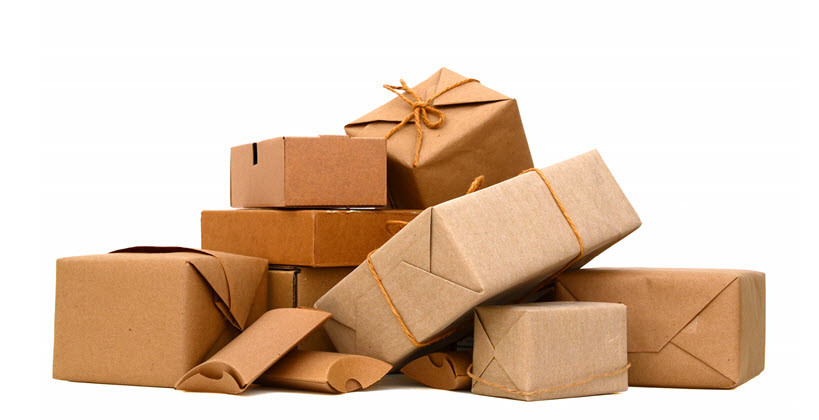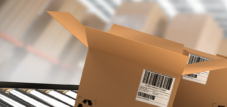introduction
The e-commerce market has been characterized by steadily increasing sales for years and so it is not surprising that, in step with increasing sales, ever-increasing volumes of returns are being recorded. Goods returned by customers represent an increasingly greater challenge for online retailers, which makes targeted returns management a crucial success factor for the company's business success. Successful returns management does not just start with the most efficient processing of the returns that have actually occurred, but also includes preventive planning in advance of the purchasing process to avoid returns. This includes, for example, making the product description as detailed as possible or optimized communication with the customer, which gives them the opportunity to contact the retailer before, during and after the actual purchase. Financial aspects such as choosing suitable payment options (PayPal, credit card, etc.) are also included.
Below we outline the challenges arising from the increase in returns and how companies are adapting their warehouse logistics to this.
Returns – a big problem, especially in Germany
Efficient returns processing is therefore essential for online retailers in order to be able to successfully compete. Its benefits can be easily illustrated using an example: An online shop with an annual volume of 1.5 million shipments has a return rate of 40%. With annual wage costs of 30,000 euros per employee, every minute saved per return would be equivalent to an annual saving of 180,000 euros.
For the area of warehouse logistics, this means, on the one hand, the constant pressure to optimize transport logistics processes (efficient location strategy, easy-to-trade packaging, etc.). Above all, however, it requires the optimal design of the internal processing processes, which often goes hand in hand with high investments in warehousing.
Returns and warehousing
Shuttle systems manage processes in Europe's largest returns company
In step with the increase in returns, the importance of professional handling of returned goods is increasing. The 100% subsidiary of Otto-Versand , Hermes Fulfillment GmbH continuously expanded its returns operation in Hamburg since 2010 into what is now the largest returns operation in Europe. Around 1,200 employees process between 50 and 60 million returned parts per year in a three-shift operation on 13,500 square meters. To this end, the company invested in installing the world's largest shuttle storage system. The heart of the new returns warehouse is a dynamic OSR shuttle system with around 176,000 storage spaces. This results in a storage capacity of around 1 million items, of which up to 15,000 items per hour can be processed and picked during peak times. In this way, the mail order company is able to process, check and prepare the returned goods for resale quickly and with a high degree of automation.
With the help of a fully electronic sorting robot (the so-called sorter ), the automatic transport of returns from goods receipt to re-storage is possible. Since the introduction of this system, the returned goods can be processed even more efficiently, stored more quickly in the shuttle high-bay warehouses and released for re-shipment more quickly. The fully automatic recording of order data and return reasons installed via computer-aided cameras also leads to an additional increase in productivity. The operational throughput time for textile returns was reduced to one hour, which significantly reduced the costs for processing and re-picking the items.
The returns process in the warehouse
Below we illustrate the process using the example of the Hermes Fulfillment returns warehouse in Hamburg. Returns processing includes the following steps:
- Goods Receipt
- Preparation of goods
- Product assessment
- Packaging
- Re-storage
The goal in every step is to reduce the resources used to the bare minimum in order to keep the returns process as short as possible.
GOODS RECEIPT
GOODS PREPARATION
Here the sorter controls both the flow of goods and the utilization of the workstations in the preparation of goods. It organizes and transports the returned shipments to the individual workstations via chutes, with photocells installed there constantly monitoring the amount of work allocated, so that it is impossible for the respective workstations to be overloaded with packages.
ASSESSMENT OF GOODS
The majority of returns received are textiles. The items are first identified using their barcode labels at almost 200 computer-aided workstations. The employees scan the item and check whether the goods match the specified data. The employees involved in product assessment have specially trained specialist knowledge to carefully check all items to ensure they are new.
Up to 98 percent of the returned textile goods are put back on sale and only around two percent go into post-processing. 80 percent of them can then be reintegrated into the inventory as new.
In cases where a returned item is declared not to be in new condition, it will either be sent back to the manufacturer, resold at a discount or destroyed.
PACKAGING
If the items are judged to be in new condition, they will in most cases be automatically repackaged. To do this, they are transported via a conveyor belt to one of the film packaging machines, where so-called polypackers automatically seal the items in film and label them with new barcode labels. More than 1,000 items per hour can be shrink-wrapped per device. The sorter then directs the majority of the items to re-storage.
RESTORAGE
Larger items and shoes are sorted manually. However, the rest of the items are automatically collected in return bins and prepared for immediate resale. Using item barcodes, volume information and quantity restrictions, the sorter can optimally put together and utilize these tubs.
Conveyor belts transport the filled containers to the outgoing goods department and to the corresponding loading points. There they are loaded fully automatically for transport.
Simplifying re-sorting through dynamic intermediate buffers
However, returns intended for resale do not necessarily have to be transported back to the original warehouse. In certain circumstances, it may be advisable to use this in a dynamic intermediate buffer, in which retailers hold (mainly fast-moving) goods in particularly easily accessible locations in the warehouse until they are sold. The advantage of these intermediate buffers is, on the one hand, the shortened logistical processing time and the resulting quicker availability of the goods for sale. On the other hand, it is accompanied by a reduction in the effort required to store the returns. However, their use does not always make economic sense, as it requires a “critical” mass of available goods in order to be operated economically. Therefore, in this special case, an increase in returns can make it useful to set up an intermediate buffer.
Strategies to avoid returns
The problem of the extraordinarily high return rates is not a purely German one, but the situation in this area is particularly tense in this country. But why does the situation in France or England look so different? The online markets there are characterized by the fact that customers return up to four times fewer products than their fellow German buyers.
Avoiding returns can first of all start with the fact that our European neighbors prefer to make their payments by credit card or advance payment, and sometimes also by check (in France). According to dealer statements, the return rate is directly related to the payment methods offered. In Germany, almost two thirds of end customers order on account. They are used to not paying for the goods until they keep them. This encourages the end customer to order more than they actually want to keep. The result: According to industry figures, an average of four out of ten items ordered are returned to the sender. This makes the Germans European champions in returning goods. In France, for example, 90 percent of retailers only ship after payment in advance, which increases the inhibition threshold for returning the purchased item.
Adding credit card payments and simultaneously reducing invoice payments represents a first step for companies to improve the return rate.
In addition, surveys among participating retailers repeatedly come to the conclusion that a detailed product description and accurate product presentation form the basis for low returns. So providers are starting to provide their customers with as much information as possible in advance: zoom functions, 360° views or detailed product descriptions as well as customer reviews already have a positive influence on the return rate. Size tables can also help keep the number of returns as low as possible. When it comes to technical devices, in addition to providing detailed product information, it is important to give customers the opportunity to contact the dealer if necessary.
Appealing to the customer’s purchasing behavior also helps. Vente Privee communicates the dilemma of returns to the press and its over 17 million customers in Europe. Jean-Michel, CEO of the company, explains: “We tell our members: We offer branded items at very reasonable prices. If you want to continue doing this, we both have to stick to the rules of the game.” According to Guarneri, the company has had great success with this strategy.
Conclusion
The profitability of online retailers depends on the efficient handling of returns. They are therefore forced to make their returns logistics as efficient as possible in order to get costs under control. In addition to preparatory measures to reduce the quota, it is crucial to integrate the returned goods back into the inventory as quickly as possible and make them ready for sale. This is best achieved by those companies that have sophisticated logistics with extensive automation in the returns warehouse. This is the only way to bring goods that are classified as new back onto the market in the shortest possible time.


